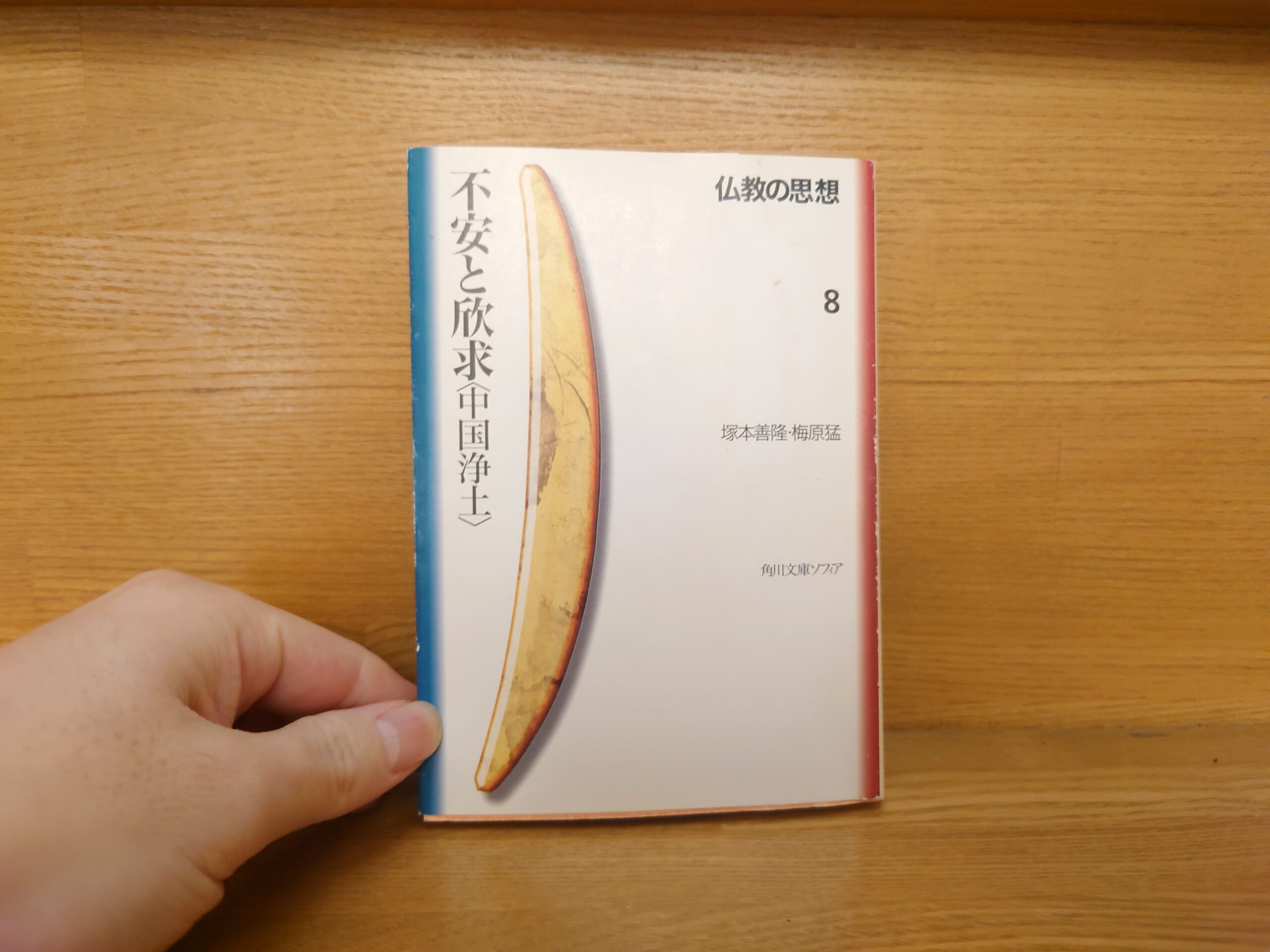Yoshitaka Tsukamoto and Takeshi Umehara, "Buddhist Thought 8: Anxiety and Joyousness " Summary and Comments - A recommended reference book to learn about the thought and life of Cloudy Lan, Dogen, and Zendo, as well as the historical background!
This time I would like to introduce "Buddhist Thought 8: Anxiety and Joyousness in the Pure Land of China," by Yoshitaka Tsukamoto and Takeshi Umehara, published by Kadokawa Shoten in 1997.
Let's take a quick look at the book.
Chinese Pure Land Buddhism, the source of Japanese Pure Land thought. What is the fascination of Zendo, who shook the souls of Honen and Shinran and gave birth to the Pure Land sect in Japan, and what is the utopian vision of Cloudy Lan, who created the foundation of Chinese Pure Land Buddhism? This study examines the insights into human existence that Pure Land thought possesses.
AmazonProducts Page.
This book, "Buddhist Thought 8: Anxiety and Joyful Life in the Chinese Pure Land," is a recommended reference for understanding the flow of Pure Land Buddhism. The Pure Land teachings are well-known in Japan, especially among Genshin, Honen, and Shinran, but there was naturally a flow from India to China and from China to Japan before Pure Land teachings were introduced to Japan. I am very grateful for this book, which explains this flow in an easy-to-understand manner.
The "Preface" to this book states the following
"Anxiety andearnest aspirationUnder the title of "The Chinese Pure Land Tradition," we have dealt with the thought of Chinese Pure Land Buddhism. Chinese Pure Land Buddhism is usually regarded in Japan as a developmental stage of Japanese Pure Land Buddhism. Honen, the great Japanese monk of the 12th century, was touched by the pure soul of Zendo, the Chinese monk of the 7th century. It was an encounter that would determine the destiny of the century. Since then, the Jodo-shu and Jodo-Shinshu sects have been established in Japan, and the Jodo-kyo sects have become the most widely followed sects in Japan, and the idea of the Pure Land has been one of the most deeply influential ideas on the Japanese people. In order for us Japanese to know our own souls, we must know the philosophy of the Pure Land.
In this case, for Japanese scholars of Pure Land Buddhism, many of whom belonged to Pure Land sects, only the religious truths of Honen, Shinran, or Ippen mattered, and Chinese Pure Land Buddhism was always treated as merely a process leading to such absolute truths.
As we have emphasized many times, this "Buddhist Thought" is an attempt to re-examine, once again, many of the Buddhist ideas that have shaped our souls as ideas. It is one view, no doubt, to see Chinese Pure Land Buddhism as a process leading to Japanese Pure Land Buddhism. However, it has its own unique ideological character. It was born out of the demands of a certain era, and it contains the shadow of the spirit of the people who earnestly lived through that era. We must clarify the light and shadow of the minds of the thinkers who lived in that era at the same time as we clarify that era.
Kadokawa Shoten, Yoshitaka Tsukamoto and Takeshi Umehara, Buddhist Thought 8: Anxiety and Joyousness in the Chinese Pure Land, p. 13-14.
For Japanese scholars of Pure Land Buddhism, many of whom belong to the Pure Land sects, only the religious truths of Honen, Shinran, or Ippen mattered, and Chinese Pure Land Buddhism was always treated as merely a process leading to such absolute truths."
This is exactly what I was thrilled about.
I am a Jodo Shinshu priest. As such, I have come into contact with many of Shinran's writings and his life, but I have to admit that I have not had much opportunity to learn about Chinese Pure Land Buddhism. But I was surprised to find many things in this book. It was an eye-opening experience to learn about the history of Jodo-kyo before it came to Japan. Of course, I had learned about the ideas of the Chinese Pure Land masters, such as Shinran, Dogen, and Zendo, in graduate school, but I did not know the details of their lives.
In this book, you can learn not only about the thought of Shinran, Dogen, and Zhenguang, but also their lives and historical backgrounds. It is clear that Buddhism was a result of the political situation in China at that time. It was very interesting to see how Chinese Pure Land Buddhism developed in the midst of repeated warfare and suppression of Buddhism, and how, during Zendo's time, Zendo's Pure Land Buddhism gained support in the prosperous downtown area of the international city of Chang'an. It is interesting to see the connection between great historical figures and their historical backgrounds. As a Jodo Shinshu monk, I tend to spend a lot of time with Shinran and Honen, but I feel that tracing back to their origins is also very significant. It is only by tracing back to the source that we can see Shinran's characteristics and uniqueness.
In this sense, this book is a very valuable work for learning about Shinran. The author's narration is easy to understand, and the reading experience is like reading a historical picture scroll. It is simply an interesting read.
I would highly recommend this book.
This is "Buddhist Thought 8: Anxiety and Joyousness in the Pure Land of China" - A recommended reference book to learn about the life and thought of Cloudy Lan, Dogen, and Zendo, as well as the historical background! This is the end of the article.
Click here to read the previous article.
Related Articles





































